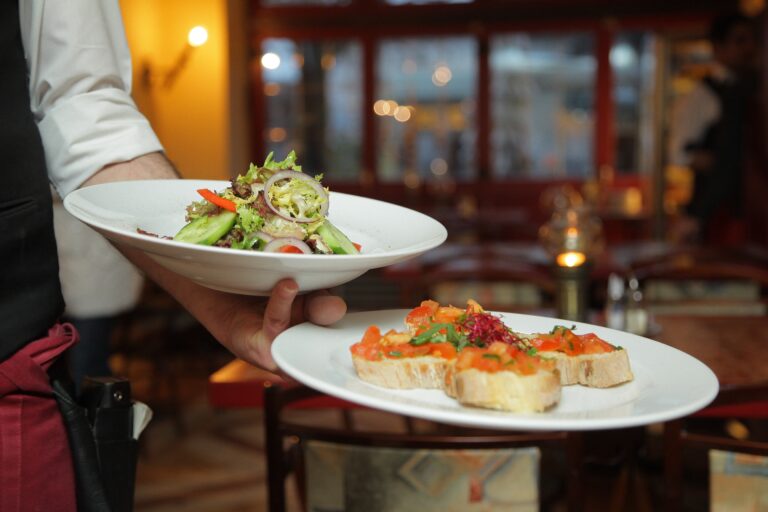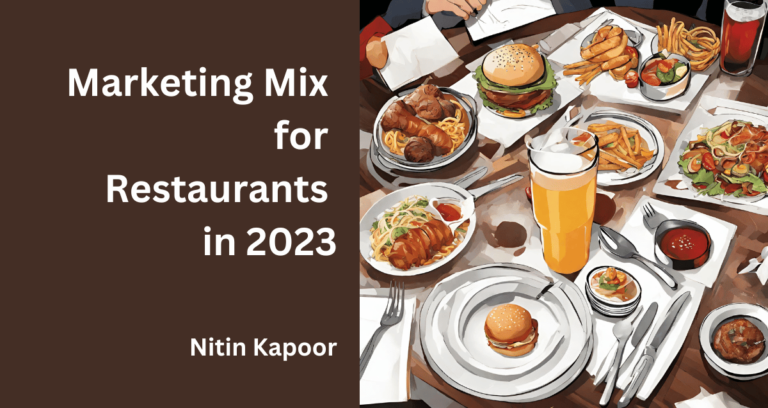Opening a Restaurant: 9-step Guide to Success

Introduction
In the world of gastronomy, the dream of opening a restaurant and making it a resounding success is a pursuit that requires meticulous planning, a deep understanding of the industry, and a passion for culinary excellence. As seasoned restaurant marketing professionals, we recognize the intricacies involved in launching a restaurant and turning it into a thriving venture. In this comprehensive guide, we provide you with a step-by-step roadmap to help you open and manage a restaurant that stands out in the competitive food industry.
Opening a Restaurant Chapter 1:
Market Research and Concept Development
Unveiling the Restaurant Landscape
To create a successful restaurant, you must first embark on a journey of in-depth market research. Explore the ever-evolving landscape of the food industry to identify trends and gaps. Market research serves as the foundation of your restaurant’s success, as it helps you to understand your competition, target audience, and culinary preferences.
You’ll need to consider the local and global food industry trends, market demand for specific cuisines, and the current competitive scenario. This information can guide your decision on the type of restaurant you want to open and the unique selling points that will set you apart.

Concept Creation
Once you’ve gained a profound understanding of the market, it’s time to craft a unique restaurant concept that sets you apart from the competition. Your concept should encapsulate your brand’s identity, target audience, and the culinary experience you aim to offer. Let’s delve deeper into this critical step for Opening a Restaurant.
The concept of your restaurant is essentially its DNA. It’s what defines your brand and determines how customers perceive your establishment. Consider factors like ambiance, decor, and the style of service. Is your restaurant a cozy, family-oriented place, or a chic, fine-dining experience? These details need to align with the preferences of your target audience.
Your concept is also tightly linked to the type of cuisine you plan to offer. It should be consistent with your restaurant’s theme and resonate with your customers. For example, if you’re opening a Mexican restaurant, your concept should incorporate elements of Mexican culture, from the decor to the music.
Additionally, think about the unique selling points of your restaurant. What makes it different from others in the same niche? This could be a signature dish, a theme night, or an innovative approach to serving food. Your concept should be compelling enough to attract and retain customers.
Opening a Restaurant Chapter 2:
Menu Design and Analysis
Crafting a Mouthwatering Menu
One of the core pillars of your restaurant’s success is the menu. Your menu should be a gastronomic masterpiece, meticulously designed to tantalize the taste buds of your customers. When expanding your menu, consider the following:
- Diversity of Choices: A well-rounded menu should offer a variety of choices to cater to different tastes. Don’t forget the vegetarians, vegans, and those with dietary restrictions.
- Signature Dishes: Create signature dishes that are exclusive to your restaurant. These dishes should represent the essence of your culinary philosophy.
- Seasonal Specials: Consider incorporating seasonal dishes that utilize fresh, in-season ingredients. This not only keeps your menu fresh but also highlights your commitment to quality.
- Pricing: Strategically price your menu items. It’s crucial to find a balance between covering your costs and offering reasonable prices. Carefully analyze the cost of ingredients, preparation, and other operational expenses when setting prices.

Pricing Strategies
Effective pricing is key to profitability. We delve into the intricacies of pricing strategies, ensuring your menu items are both enticing to customers and lucrative for your business.
- Cost-Plus Pricing: This method involves calculating the cost of ingredients and labor, and then adding a markup. It’s a straightforward way to ensure you cover your expenses and generate a profit.
- Value-Based Pricing: This strategy considers the perceived value of your dishes. For example, a unique and rare ingredient in a dish might justify a higher price.
- Competitive Pricing: Analyze the prices of similar restaurants in your area. Your prices should be competitive, but they should also reflect the quality of your offerings.
- Dynamic Pricing: Adjust your prices based on demand and supply. For example, during peak dining hours, you could charge a premium.
Opening a Restaurant Chapter 3:
Restaurant Sales Analysis and Growth Strategies
Analyzing Sales Data
To thrive in the restaurant business, you need to keep a close eye on your sales data. Without analyzing your sales, you’d be operating blindly. With detailed sales analysis, you can:
- Identify Popular Items: Through sales data, identify the items that are selling well and those that aren’t. This helps in optimizing your menu.
- Customer Behavior: Understand your customers’ behavior. What time do they prefer to dine? Do they like takeout or dine-in? This knowledge can help in scheduling staff and tailoring promotions.
- Seasonal Patterns: Recognize seasonal patterns in your sales. This can guide menu changes, specials, and marketing efforts.
- Pricing Impact: Determine how changes in pricing affect sales. This information is invaluable in setting the right prices.

Revenue-Boosting Strategies
Drawing from our expertise in sales analysis, we recommend strategies to boost revenue. Whether it’s optimizing the menu, introducing loyalty programs, or exploring catering services, our insights can make a significant difference.
- Upselling: Train your staff to upsell – suggest appetizers, wine pairings, or desserts. These will definitely shoot up the average bill value.
- Loyalty Programs: Plan to start a loyalty program to reward customers who have visited your restaurant once or more than once. Offer discounts, free items, or exclusive events to keep customers coming back.
- Online Presence: Maintain a strong online presence. Utilize social media, online reviews, and a user-friendly website to attract and retain customers.
- Catering Services: Explore the potential of catering for events, parties, and corporate functions. This can be a lucrative revenue stream.
Opening a Restaurant Chapter 4:
Leveraging Social Media for Restaurant Success
Building an Online Presence
In today’s digital age, a strong online presence is imperative for any restaurant. We guide you through crafting engaging content and strategies that resonate with your target audience on various social media platforms.
Social media is a powerful tool for restaurants. It allows you to connect with your audience, showcase your dishes, and create a sense of community. You need to do at least the following things to be successful online:
- Platform Selection: Choose the social media platforms that align with your target audience. For instance, Instagram is perfect for sharing visually appealing dishes, while Facebook is great for connecting with a broader audience.
- Content Creation: Develop a content calendar that includes high-quality photos of your food, behind-the-scenes glimpses, and customer testimonials. Consistency is key.
- Engagement: Interact with your followers. Respond to comments and messages promptly. Encourage user-generated content by sharing customer photos and reviews.
- Promotions: Use social media to promote special events, offers, and new menu items. Social media can also be a powerful tool for launching online ordering and delivery services.
Maximizing User Engagement
We understand the nuances of different social media platforms and help you leverage them to connect with your audience effectively. Our insights will ensure your restaurant maintains a strong online presence when you are Opening a Restaurant.
To maximize user engagement, consider:
- Storytelling: Share the story of your restaurant. Highlight the journey, the passion, and the people behind the scenes. This humanizes your brand and makes it more relatable.
- User-Generated Content: Encourage your customers to post about their dining experiences. Repost their content, giving them a sense of recognition.
- Consistency: Post regularly and at the right times. Each platform has peak engagement times, so schedule your posts accordingly.
- Advertising: Consider running targeted ads on social media to reach a wider audience and promote your restaurant’s offerings.
Opening a Restaurant Chapter 5:
Evaluating and Enhancing Your Restaurant Website
Website Analysis
Your restaurant’s website is the digital face of your brand. We assess its user experience, mobile-friendliness, and content quality to help you create an engaging online platform.
In the digital age, your website is often the first point of contact between your restaurant and potential customers. It’s crucial that your website provides a seamless and engaging experience. To evaluate your website:
- User Experience (UX): Is your website easy to navigate? Are the menu, contact information, and online reservation system easily accessible?
- Mobile-Friendly: Given the prevalence of mobile browsing, ensure that your website is responsive and functions well on smartphones and tablets.
- Content Quality: Is the content on your website well-written, informative, and up-to-date? Does it reflect your restaurant’s identity and offerings accurately?
- Visual Appeal: The visual design of your website should align with your restaurant’s theme and ambiance.

Enhancing Customer Engagement
Our proficiency in website evaluation spans the globe. We provide recommendations to optimize your online platform, enhancing customer engagement and driving reservations.
To enhance customer engagement on your website, consider:
- Online Reservations: Implement an easy-to-use online reservation system. This makes the booking procedure easier for your customers.
- Menu Presentation: Your menu should be presented clearly, with appetizing photos and detailed descriptions. Make it easy for customers to explore your culinary offerings.
- Contact Information: Make sure your contact information is easily accessible. Include a map, an address, a phone number, and an email address.
- Feedback Mechanism: Allow customers to leave feedback and reviews on your website. Positive reviews can boost your reputation, while constructive feedback can help you improve.
Conclusion

In the dynamic and competitive world of the restaurant industry, success hinges on meticulous planning, an innovative approach, and data-driven decision-making. This expanded guide offers a holistic perspective, drawing from our expertise in new brand research, menu analysis, sales analysis, social media engagement, and website evaluation. By following these steps, you can unlock the doors to a thriving and prosperous restaurant venture that will truly stand out in the culinary landscape. Your journey towards restaurant success begins with a deep understanding of the industry and a commitment to excellence. Also, see this to know the future of restaurants
An example of one of the successful restaurants that I did in New Zealand Recently.






